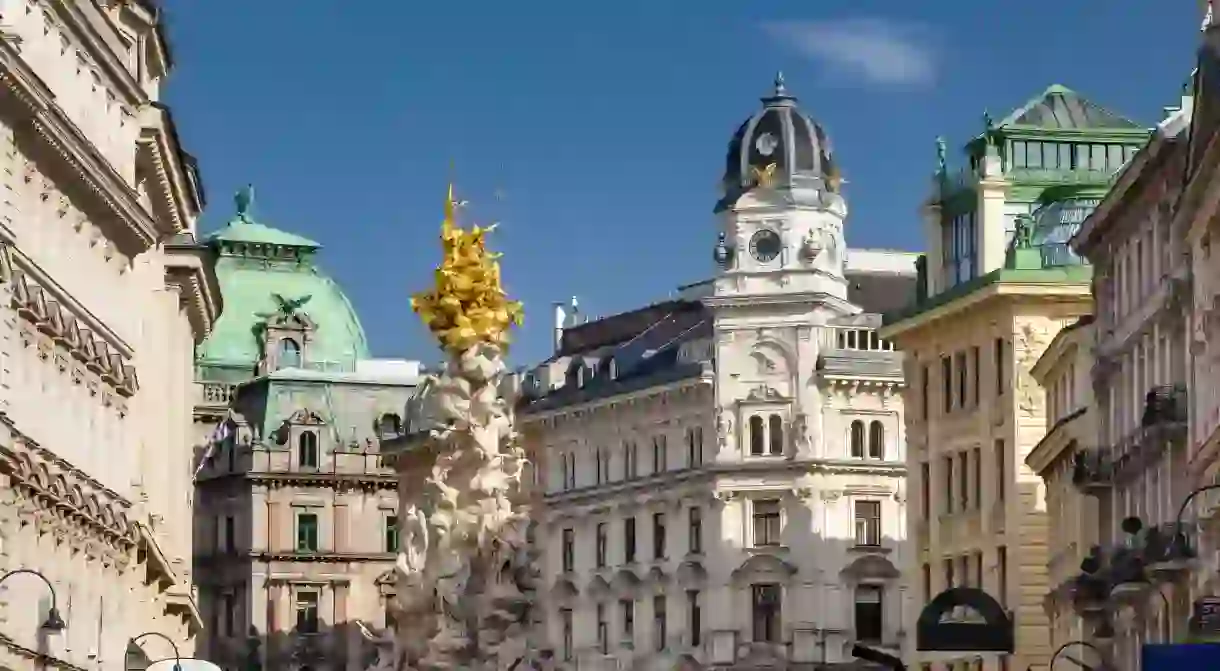Stay Curious: Experience Vienna From Your Living Room

As staying in becomes the new normal, Culture Trip invites you to indulge in a spot of cloud tourism. Transport yourself virtually to Vienna, and experience the city’s world-famous culture, art and music without even leaving your home.
The current pandemic has travellers around the globe stuck indoors for the foreseeable future. But that doesn’t mean that exploring different cultures also has to stop. For those dreaming of Vienna’s cobbled streets, hearty comfort foods and enriching cultural offerings, with the help of the internet, it’s still possible to connect with the city. Mix yourself a wine spritzer and settle in for a spot of cloud tourism to get a taste of Austria’s capital from the comfort of your own home.
Film: ‘The Third Man’
The Third Man is so popular among Vienna’s residents and visitors that it is screened regularly at Burg Kino, one of the city’s oldest cinemas. A cat-and-mouse noir thriller written by Graham Greene and brought to life on the screen by Carol Reed, The Third Man is considered by some to be one of the best British films ever made. Set in 1948, the movie takes viewers through the cobbled streets and courtyards of Vienna during the early days of the intrigue-filled Cold War, when the city was occupied by Allied forces. Experience Vienna as it was at this significant point in its history by renting The Third Man from a streaming service. Look out for scenes featuring Vienna’s iconic Ferris wheel, which is still operative today.

Art: Gustav Klimt
Perhaps no artist is as synonymous with Vienna as Gustav Klimt, one of the world’s most well-known painters. Klimt, who was born on the outskirts of Vienna, was one of the 21 artists who rebelled against the city’s conservative and pre-eminent artists’ association, the Academy of Arts, in 1897. By forming an outsider artists’ group called the Vienna Secession, the collective arguably brought Vienna’s art scene into the modern age.
Klimt’s beloved works Judith and the Head of Holofernes and The Kiss, both of which are prime examples of the work he produced during his Golden Phase, are housed at the Belvedere Museum. Make the most of the Belvedere’s digital archives, where you can browse through some of Klimt’s many works, as well as photos of him, his friends and his family members. Elsewhere, to get an introduction to the artist’s murals, check out Google’s presentation of the painted ceilings at the Burgtheater, which were decorated by the artist and his brother, Ernst Klimt. Or, for a modern re-imagining of Klimt’s work, put on that pair of 3D glasses you have buried somewhere in your home, and check out a virtual-reality experience inspired by his designs for a mosaic frieze.

Recipe: Kaiserschmarrn
Now is the time to indulge in comfort foods – something that Austrian cuisine excels in. For a sweet, sticky and filling Austrian dessert, it’s got to be kaiserschmarrn. You’ll find variations of the recipe online (including one by the Austrian chef Wolfgang Puck, who calls it a “soufflé pancake”). In a nutshell, kaiserschmarrn is a pancake that’s torn into pieces, caramelised under a grill and usually mixed with sugar and raisins, fruit preserves or stewed plums. Since you’re making it at home, go ahead and add in whatever you please – or whatever you’ve managed to find in the shops. The name kaiserschmarrn means “Emperor’s Mess”, and refers to Franz Joseph I, who ruled the Austro-Hungarian empire in the 19th and early 20th centuries, and who was particularly fond of the pudding.

Music: Staatsoper
Vienna is famous around the world for its opera, and while we’re all relegated to our homes, the Staatsoper (State Opera) is streaming recorded opera and ballet performances every day for free. For the full schedule, which includes Tosca, Romeo and Juliet and Peer Gynt, head to the official website (members can also access extra content). The good news? There is no need to adhere to the opera’s formal dress code when you’re watching from your bed – unless you want to make an at-home event out of it.

Dance: The waltz
You might have spent the last couple of days learning TikTok dances at home, but for a taste of classic Viennese ball culture, try to master the waltz. Check out the online courses and video tutorials offered by Austrian schools, such as the Social Dancing Academy in Graz. It may sound old-fashioned, but the waltz is still an integral part of the Austrian ball season, which spans several months and around 450 separate events each year. The tradition of the ball season dates back to the late 18th century, when Emperor Joseph II invited non-nobles to dances at the Hofburg palace. When the waltz first started showing up at aristocratic balls in the 19th century, it shocked the public by the amount of close contact it required in comparison to existing partner dances. So grab your isolation partner and bring Austria’s sophisticated ball season inside.














